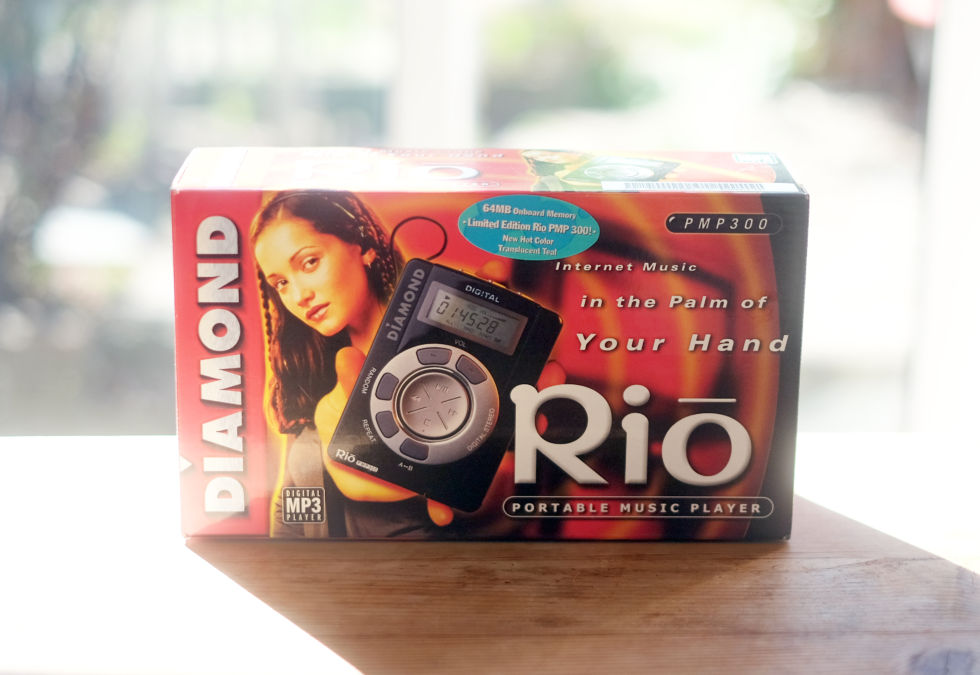
Do you remember the days of flicking through racks of CDs on a Saturday afternoon, looking for the album of an artist you just heard about, perhaps a £3 bargain, or even just cruising for eye-catching covers? Bliss. While the advent of the iTunes store all but ended the need for physical media, there was for a short while an element of bragging rights attached to having a multi-gigabyte music collection on your iPod—but even the idea of owning digital music is fading. Our once-vast music collections have been culled in favour of convenient streaming music services that give us access to all the music we could ever dream of in just a few taps.
But were we better off before? I'm going to find out.
Let's make MP3s great again
My journey down the MP3 rabbit hole started during an afternoon spent reminiscing about the various music players I've owned over the years—the iPod Classics, an iRiver H140, a brief stint with a forgotten 20GB Philips box, and a Rio Riot, the Atari Lynx of unloved MP3 players. Each has a charm you no longer see, now that everything fits into an Android or iOS slab. Well, apart from the assortment of weird and wacky audiophile players (I'm looking at you Pono Player), some of which could have been beamed straight from 1998.

My favourite, though, was the Creative Nomad Jukebox, which I bought in the early 2000s after hours of stacking frozen livers down at the local supermarket. The size of a portable CD player, it sported an unprecedented 6GB of memory courtesy of a small 1.8-inch hard drive, and was powered by a Texas Instruments TMS320DA25x ARM processor. It had two line-out jacks, a line-in jack for recording, a parametric equaliser, spatialisation settings, and environmental settings that made use of Creative's EAX audio extensions. At the time it was the most powerful MP3 player around—at least until a certain fruit-branded company got in the action.
I still vividly remember researching what LAME and EAC meant—this piece from the Ars Technica of old explains it in detail—and illegally downloading single tracks off of Napster using a dial-up connection and a dodgy US Robotics 56K modem. Blocking the phone line was a nationwide hobby for years.
But rather than turn to the relatively sophisticated Creative Nomad (hey, this thing had a Firewire port on it after all) for my trip down MP3 memory lane, I opted for something more famous: the glorious Diamond Rio PMP300. It is the MP3 player most often wrongly cited as the first that was commercially available. It wasn't—that accolade belongs to the MPMan—but it's probably the earliest one that many will recognise. The question is, 18 years after it was first released, can PMP300 could hold its own as a MP3 player in 2016?
The pre-iPod iPod
The Rio PMP300 was released in 1998, almost 10 years before the iPhone, at a time when the average UK home broadband speed was around 33.6Kbps—almost a thousand times slower than today's average of 28.9Mbps. This was before the first iPod, or indeed any large-capacity MP3 players existed. The idea of a music jukebox that could hold everything is what hooked me into the idea of an MP3 player, but it was actually smaller-capacity devices like the Rio PMP300 that established the category. Rio's first version of the PMP300 had just 32MB memory, enough for around half an hour of tunes—not even a full album.
That's at a miserly 128Kbps bitrate too. Nowadays you can make decent-sounding files at this rate, but in 1998 encoding options were far more limited. Constant bitrate MP3 files at 128Kbps back in 1998 were always on the verge of turning cymbals into alien-sounding digital garbles, and making even the most talented of singers sound like they were singing into a tube of toilet roll. Quite how we put up with it—particularly given the quality of portable CD players, MiniDiscs, or even cassettes—I'll never know.

The Rio PMP300 was an early-adopter gadget. It cost about £150 at launch for that half-album of storage, but the music industry recognised the threat almost instantly. One month after the player was released, the Recording Industry Association of America filed a suit against Rio on the grounds that the device didn't check for the copyright status of files before playing them. It claimed this was a violation of the Audio Home Recording Act. The aim was to stop Rio selling the PMP300 altogether. The RIAA wanted DRM in MP3s right from the start, which isn't surprising, though the state of digital music today would be very different had the RIAA won its case back in the 90s.
That said, while the case was thrown out pretty quickly, the RIAA ultimately had its way in the long run. Today's music streaming services are locked behind monthly subscriptions, and even free ad-supported services may soon disappear.
reader comments
213